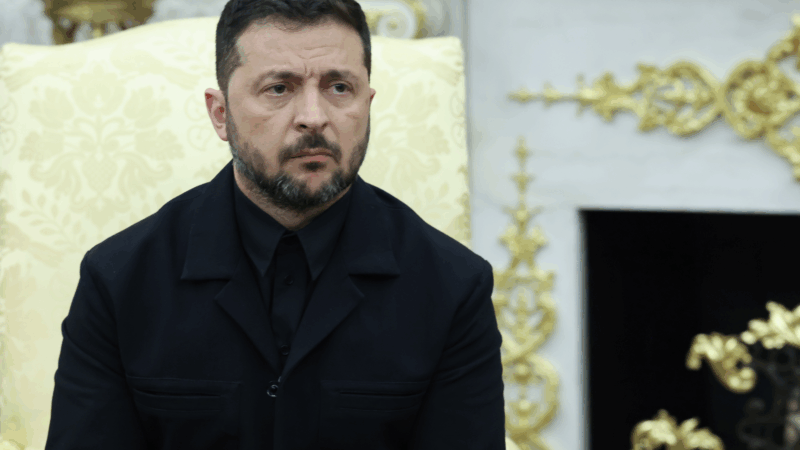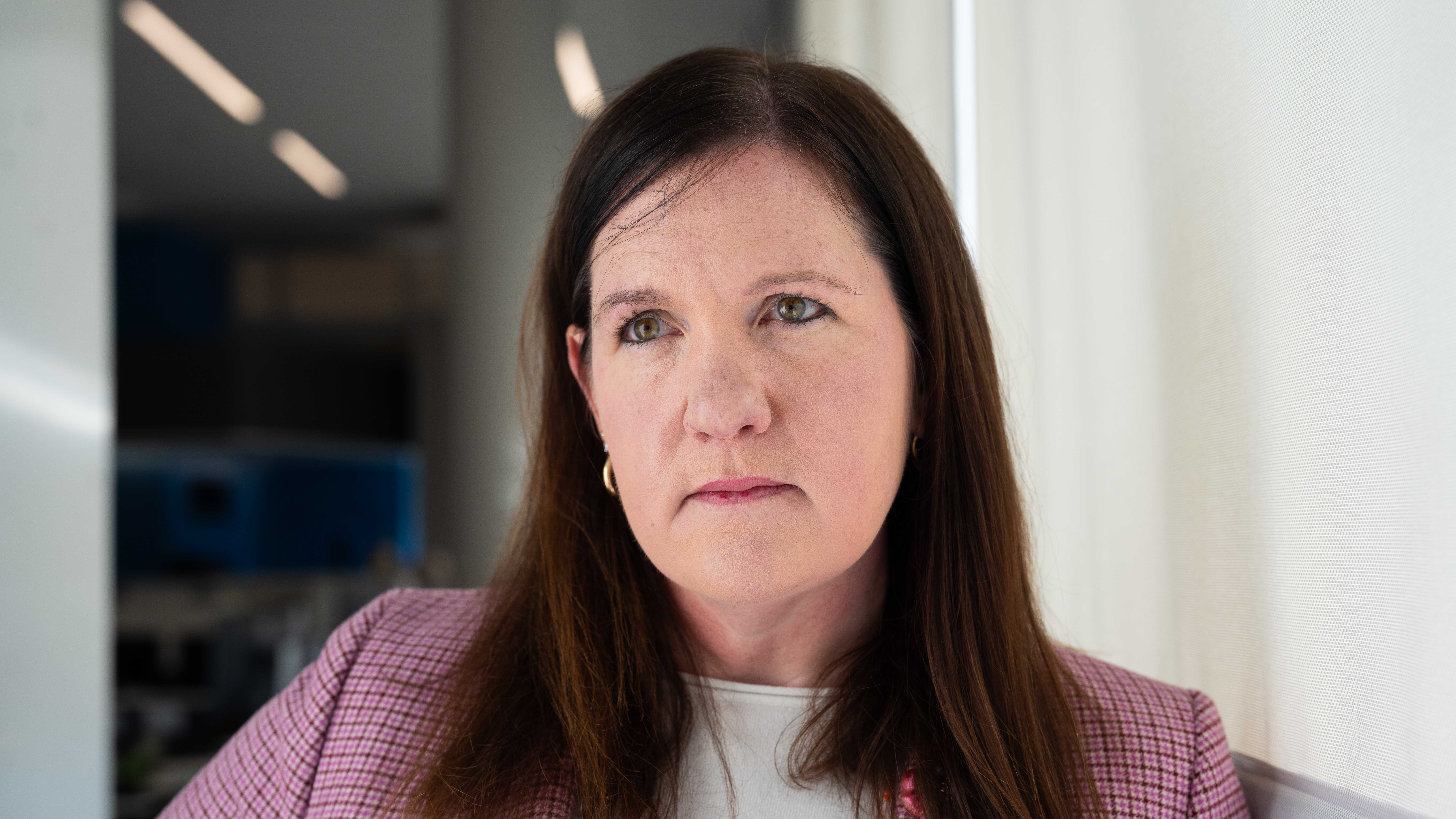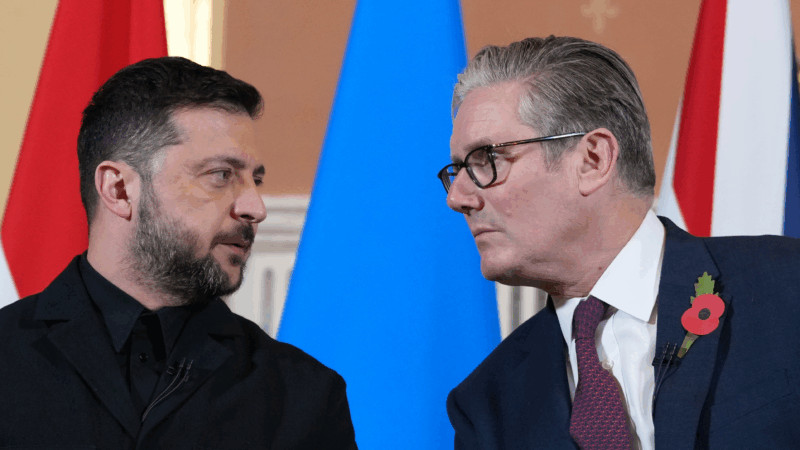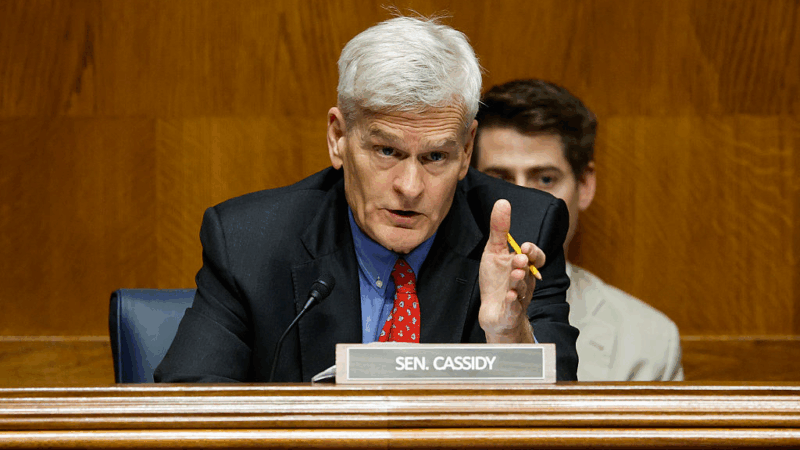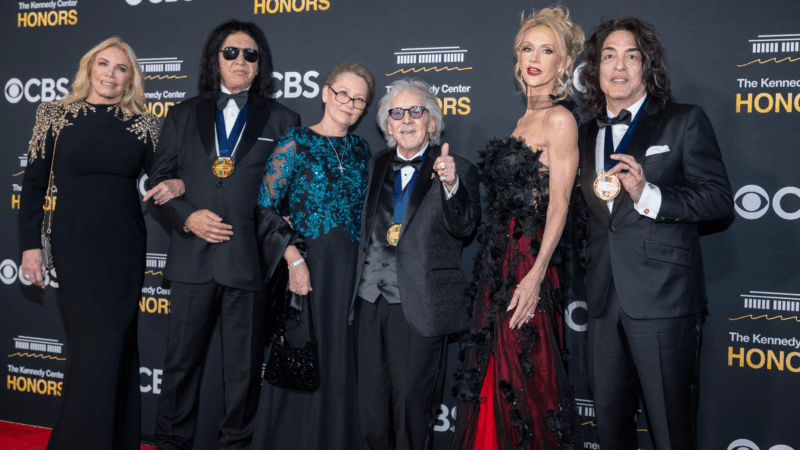Opinion: Wardrobe diplomacy
A question hung over this week’s meeting between President Trump and Ukrainian President Volodymyr Zelenskyy. What would President Zelenskyy wear to the Oval Office?
Last February, Ukraine’s president wore a black Henley shirt to the White House, no jacket, keeping the bunker-chic look he’s maintained since the 2022 Russian invasion. But the meeting got combative.
President Trump chastised President Zelenskyy as ungrateful for U.S. support. A reporter for a right-wing cable channel called out, “Why don’t you wear a suit? You’re at the highest level in this country’s office, and you refused to wear a suit… do you own a suit?”
President Trump ended the meeting and said of the Ukrainian president on social media, “He disrespected the United States of America in its cherished Oval Office.”
This week, President Zelenskyy changed his look. He wore a black canvas blazer over a black collared shirt, buttoned at the top. Still no tie — but his solemn clothing seemed to proclaim: let’s have a serious conversation.
Even the reporter who panned his February wardrobe told Zelenskyy he looked “fabulous.” President Trump added, “I said the same thing.” President Zelenskyy told the reporter, “And you’re in the same suit. You see, I changed, you have not.”
Yes, men can get weary of being judged by the cut of their clothes, not the cut of their jibs.
Sam Schube, who covered the fashion aspect of the Oval Office meeting for The Wall Street Journal told us, “I’m not sure there’s such a thing as a non-political outfit — everything politicians wear, no matter how bland, sends a message.”
Winston Churchill famously wore an air-raid suit when he visited the White House in December, 1941, just after the United States had been attacked at Pearl Harbor. It reminded Americans that Britons were being bombed in their homes, and Europe faced a life-or-death crisis.
Sam Schube says President Zelenskyy has been working with a Ukrainian designer so that his clothing in public appearances, “blends his wartime style with something a bit more formal. He looks like he’s dressing not just for battle, but high-stakes endgame diplomacy.”
Zelenskyy called this week’s White House visit “the best one” yet. The clothes may not make the man — but they might help make for a better meeting.
Transcript:
SCOTT SIMON, HOST:
A question hung over this week’s meeting between President Trump and Ukrainian President Volodymyr Zelenskyy. What would President Zelenskyy wear to the Oval Office? Last February, Ukraine’s president wore a black Henley shirt to the White House, no jacket, keeping the bunker-chic look he’s maintained since the 2022 Russian invasion. The meeting got combative. President Trump chastised President Zelenskyy as ungrateful for U.S. support. A reporter for a right-wing cable channel called out, why don’t you wear a suit? You’re at the highest level in this country’s office, and you refuse to wear a suit. Do you own a suit? President Trump ended the meeting and said of the Ukrainian president on social media, he disrespected the United States of America in its cherished Oval Office.
This week, President Zelenskyy changed his look. He wore a black canvas blazer over a black collared shirt, buttoned at the top. Still no tie, but his solemn clothing seemed to proclaim, let’s have a serious conversation. Even the reporter who panned his February wardrobe told Zelenskyy he looked fabulous. President Trump added, I said the same thing. President Zelenskyy told the reporter, and you’re in the same suit. You see, I changed. You have not.
Yes, men can get wary of being judged by the cut of their clothes, not the cut of their jibs. Sam Schube, who covered the fashion aspect of the Oval Office meeting for The Wall Street Journal, told us, I’m not sure there’s such a thing as a nonpolitical outfit – everything politicians wear, no matter how bland, sends a message. Winston Churchill famously wore an air raid suit when he visited the White House in December 1941, just after the United States had been attacked at Pearl Harbor. It reminded Americans that Britons were being bombed in their homes and Europe faced a life-or-death crisis.
Sam Schube says President Zelenskyy has been working with the Ukrainian designer so that his clothing and public appearances blends his wartime style with something a bit more formal. It looks like he’s dressing not just for battle, but high-stakes endgame diplomacy. Zelenskyy called this week’s White House visit the best one yet. The clothes may not make the man, but they might help make for a better meeting.
(SOUNDBITE OF GROVER WASHINGTON JR.’S “MISTER MAGIC”)
After Texas ruling, Trump and Republicans head to 2026 with a redistricting edge
Trump has prompted a redistricting race as he tries to maintain Republican control of the House in the 2026 elections. Democrats have fewer options to counter, as the battle heads into next year.
How China, not the U.S., became the main climate solution story in 2025
The U.S. has become a "side character" in the global story of renewable energy, experts say. China dominates the sector, with positive implications for the climate and their economy.
Supreme Court to hear case that could vastly expand presidential powers
The Supreme Court hears arguments in a case about President Trump's firing of a Federal Trade Commissioner. At stake is a 90-year precedent limiting the president's power over independent agencies.
Zelenskyy heads to London for more Ukraine peace talks. Here’s what to know
The talks signal fresh support from European allies. But they follow stalled U.S. negotiations in Miami and comments from President Trump's son suggesting Washington is ready to pull back.
Republicans push high deductible plans and health savings accounts
A Republican call to give Americans cash instead of health insurance subsidies revives an old idea that has left millions with medical debt.
Tributes, not politics, play center stage as Trump hosts the Kennedy Center Honors
President Trump said he was closely involved with picking the honorees, and on Sunday he became the first president to host the Kennedy Center awards ceremony.

